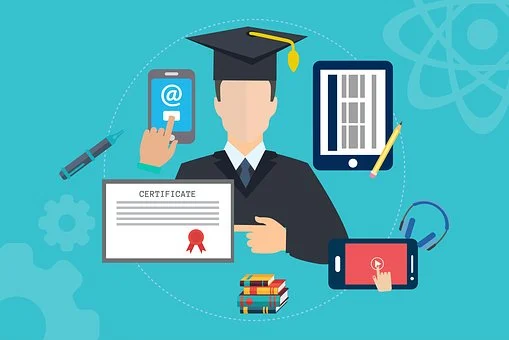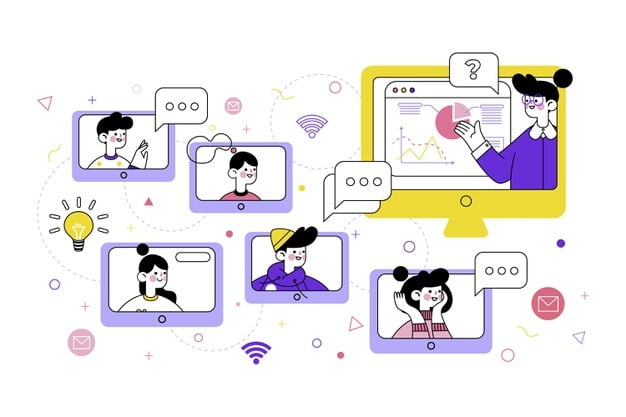LMS Selection Process: How To Go About It

Let’s say you’re a high school student with a learning management system (LMS). An LMS selection process can be hectic and stressful. Perhaps you’ve already written your first assignment and are looking to graduate with a healthy amount of work left in you. Or perhaps you’re upgrading your system and need help getting ready for next year.
Whatever the case, you may want to take a step ahead of the competition by entering this blog post as your guide through the process of choosing a learning management system (LMS). The goal of this article is to give you an up-close look at what systems are out there and how to pick the right one for your needs.
It will also outline why and how to choose the appropriate LMS from among thousands of choices. Let’s get started…
Read: Top 8 LMS Features For Corporate Training
What Is a Learning Management System?
A learning management system (LMS) is any software application that manages students’ time and learner expectations so that each student can learn independently but simultaneously works towards a common end goal.
Today, there are many different types of LMS but few offer everything students need or even something they might need for specific use case scenarios. This article covers five general types: virtual education, heterogeneous computing, open source education, hybrid instructional design, and artificial intelligence (AI) LMSs.
What is an AI LMS?
An AI LMS is a learning management system that uses digital technology to improve learning, identify and correct errors, and gather data that can be used to train new digital skills. By incorporating artificial intelligence and high-fidelity visuals, an AI LMS can target specific learning areas, enrich content, and develop a more accurate assessment system.
What is a Virtual Education System?
For learners of all ages and levels, virtual education is the method of instruction that allows each student to learn at their own pace in a virtual environment. Virtual education is often associated with interactive, digital education, but it can also be used as a static, static-only instruction method.
Virtual education is often meant to be taken online, but it can also be delivered as a traditional course in a traditional setting. Virtual education is not only intended for learners of different ages and abilities; it can also be used as a homeroom, middle school, or high school class.
Why Choose a Learning Management System?
A great learning environment is something that both students and parents/guardians can appreciate and benefit from. With so many choices out there, it can be difficult for one to know which system would be right for their needs. When it comes to choosing the right system, parents can take comfort in the fact that their child is their best protection from bad teaching and poor learning. Parents can also rely on the fact that a learning environment will be more enjoyable, more challenging, and provide an enriching learning experience for their child if they choose the right system.
LMS Selection Process
Heterogeneous Computing LMS
Heterogeneous computing LMs are designed to work with a variety of computing platforms, operating systems, and software distributions. They use an internal hard drive for data, meaning there’s no need for separate physical media. They are often visual, with color-coding, word-processing, and image-editing tools.
Open Source Education LMS
An open-source education LMS is a software application that offers digital instruction with online assignments and online platforms for education employees. It is often available for free or for a fee for additional education.
Hybrid Instruction LMS
A hybrid instruction LMS incorporates digital technology and instruction from other sources, like a principal’s office or college campus. It has multiple learning areas and can be used as a single source of data for both assessment and instruction.
Artificial Intelligence LMS
Artificial intelligence (AI) LMs are designed to train specific digital skills. They are often video-based and can be used to train children on tasks like reading, writing, and speaking. These types of LMs are ideal for students who are not well-acquainted with digital technologies. They are easy to set up and use, but they do not require the installation of hardware or software. They are also easy to learn.
Decision Making
At a basic level, every decision a student makes has to do with digital literacy and is influenced by previous learning. This includes decisions about how to use digital technology, what search terms are best for digital literacy assessments, and how to use digital learning tools.
Knowledge Transfer
Learning new skills and implementing them in your current system can be challenging. That’s why it’s important to choose a digital learning system that blends digital content, technology, and instruction well. This makes it easy for students to pick up the hang of digital literacy on their own, without feeling as though they are being observed or pressured to stick with the system.
Micro- Dancing
One of the most effective ways to introduce digital literacy to a school-age child is by micro-dancing. This can be done in a physical space, on the playground, or at another school event. It is important to keep in mind that dancing is not an appropriate tool for every digital literacy purpose. It’s intended for developing basic skills, not for advanced digital literacy.
Next steps
The Select Learning Management System process is designed to get you started picking the right learning management system for your child. From there, you can choose the right time, the right place, and the right program for each student. This process is broken down into five stages, with each stage representing a stage in your child’s development:
Finding the Right Place: This is when you start to explore all the available options. You want to choose a learning management system that can be used in your school setting, that you are comfortable with, and that you know will work.
Creating a Learning Environment: This is when you start to design your digital environment around your learning goals. You want to create a space that will encourage students to use digital literacy as part of their learning journey. This includes establishing common areas, making digital literacy accessible, and giving students information that they might need to take the next step.
Establishing a Learning Path: This is when you start to allow your students to develop digital literacy skills in areas that they are not yet well-acquainted with. This includes building an access list for digital literacy opportunities, teaching your students how to use social media, and establishing healthy communication habits.
Moving to the Next Steps: This is when you begin to allow your students to choose their path. This includes choosing high-quality, online courses and taking calculated risks with your digital education.
Conclusion
Congratulations! You’ve found the perfect LMS selection process for your child. Now it’s time to implement it. This article has provided you some ideas and examples of what types of learning management systems are available, and how they can help your child reach their full potential.
As you begin to implement a learning management system, you’ll begin to realize the benefits of using a hybrid approach. It may not be possible to fully integrate traditional digital content with a hybrid approach, but that doesn’t mean it can’t be done. A hybrid approach can provide a lot more value to your child than either of the traditional methods.





